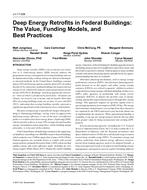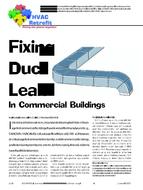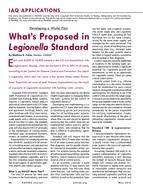Gas-filled insulation panels (GFP), which were initially developed with a grant from the U.S. Department of Energy, are verylightweight and compact (when uninflated) advanced insulation products. GFPs consist of multiple layers of thin, low-emittance(low-e) metalized aluminum. When expanded, the internal, low-e aluminum layers form a honeycomb structure. These baffledpolymer chambers are enveloped by a sealed barrier and filled with either air or a low-conductivity gas such as argon, krypton,or xenon. The sealed exterior aluminum foil barrier films provide thermal resistance, flammability protection, and properties tocontain air or a low-conductivity inert gas.
The unexpanded product is nearly flat for easy storage and transport. Therefore, the transportation volume and weight ofthe GFP needed to fill the volume of wall cavity is much smaller than that of conventional insulation products. This feature makesthis product appealing to use at U.S. Army contingency and forward operating bases, where transportation costs are much higherthan the cost of materials. This paper presents lab test results conducted in a rotatable guarded hotbox to evaluate the thermalperformance of walls, similar to those used in typical barrack hut (B-hut) hard shelters, with GFPs in cavities. The test resultshow that while the effective surface-to surface thermal resistance (R-value) of the wall with two layers of GFP decreases sharplyas the temperature of the GFPs increases, the R-value of the wall with only one layer of GFP remains fairly steady. That is becausethe R-value of 0.5 in. air space decreases and that of 1.5 in. air space increases as the mean temperature increases.
Citation: Thermal Performance of Exterior Envelopes of Whole Buildings XIII, Conference Papers
Product Details
- Published:
- 2016
- Number of Pages:
- 6
- Units of Measure:
- Dual
- File Size:
- 1 file , 2 MB
- Product Code(s):
- D-BldgConf16-53


